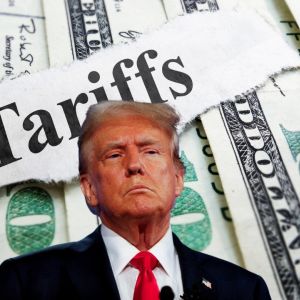CoinDCX Hack Rumors: $44M Drain or Just a Scare?
Crypto investigator ZachXBT lit up the timeline with a warning that has since shaken one of India’s biggest exchanges – case study, CoinDCX. In a now-viral post, he flagged an alleged breach at CoinDCX, hinting that the platform may have quietly lost $44.2 million in a silent drain nearly 17 hours before the exchange made any public comment. BIG BREAKING: $44M Gone? CoinDCX Hack Rumors Spark Panic After ZachXBT Alert Crypto detective #ZachXBT just shared that the Indian exchange #CoinDCX might have been drained of $44.2 million nearly 17 hours ago — and they haven’t told the public yet. Wallets linked to the theft:… pic.twitter.com/syDgplo0F7 — Crypto Patel (@CryptoPatel) July 19, 2025 At the heart of the suspicion are three wallets, each showing sizable inflows of funds from CoinDCX-linked sources. On-chain data appears to back up the concern, showing a cumulative movement of over $44 million—numbers that closely match the alleged amount lost. As the data surfaced, the crypto community responded with a mix of alarm, frustration, and questions, all amplified by the exchange’s initial silence. The reason this incident hit so hard is simple: CoinDCX is no small player. It ranks among India’s largest crypto platforms, reportedly serving more than six million users and processing billions in trading volume each month. A breach of this size and nature—especially one that went unaddressed for hours—was always going to cause panic. And it did. Eventually, the exchange issued a statement. On X (formerly Twitter), CoinDCX reassured users that no customer funds were affected, that all digital assets remained securely stored in cold wallets, and that trading operations along with INR withdrawals were functioning without interruption. They clarified that the incident involved a single operational account, which is isolated from user wallets, and that any losses incurred would be covered internally from their treasury—not from customer balances. Hi everyone, At @CoinDCX , we have always believed in being transparent with our community, hence I am sharing this with you directly. Today, one of our internal operational accounts – used only for liquidity provisioning on a partner exchange – was compromised due to a… pic.twitter.com/L1kZhjKAxQ — Sumit Gupta (CoinDCX) (@smtgpt) July 19, 2025 In the same post, the exchange laid out a response plan. The affected account was immediately isolated to prevent further unauthorized access, and cybersecurity partners were brought in to conduct a thorough audit. The company also said it was actively tracing the stolen funds and working with ecosystem partners to recover as much as possible. A bug bounty program is also in the works, aimed at incentivizing white-hat hackers to help identify future vulnerabilities. Their message was clear: they’re learning, adapting, and doubling down on security. Community Shows Skepticism Over CoinDCX’s Response Still, not everyone is convinced. On social media, user trust remains shaky. Some traders expressed skepticism over the lack of real-time communication, while others criticized the idea of absorbing losses from treasury reserves as a short-term bandage that doesn’t guarantee long-term protection. Many users reported moving their assets to cold wallets immediately, unwilling to wait for another possible shock. Telegram channels and exchange support desks saw spikes in traffic, and fear-driven withdrawals followed. Security professionals say the quick response was a positive first step, but they’re urging deeper transparency. Several experts have called for a full post-mortem to be published once investigations are complete. According to one blockchain auditor, acknowledging the root cause and sharing technical details will be essential to restoring credibility. A tweet can’t undo trust erosion on its own. For users still on the platform, the advice is simple. Log in and check your balances to make sure everything aligns with your own transaction records. If you’re not actively trading, consider moving some funds into a personal hardware wallet for extra safety. And most importantly, stay tuned to official updates via CoinDCX’s blog, social media accounts, and support channels. Right now, staying informed is half the battle. This incident couldn’t have come at a more sensitive time. India’s finance ministry is already applying tighter scrutiny to crypto platforms, with ongoing discussions around stronger KYC requirements, capital reserves, and security audits. A breach of this nature, regardless of who ends up financially impacted, could escalate those conversations—and fast. Other Indian exchanges may soon face intensified checks, and some global investors could grow more cautious about deploying capital into the country’s digital asset markets. The original alert, posted by ZachXBT, helped shine a light on something the public might not have known about for hours—if at all. CoinDCX eventually came forward with assurances, but the sequence of silence followed by selective detail has left a scar. Whether the exchange can rebuild trust will depend heavily on the transparency of the coming days. Right now, all eyes are on CoinDCX. The $44 million question isn’t just about how it happened—it’s about how the platform responds, what it reveals, and whether users can ever fully trust that their assets are safe again. Until the full story surfaces, caution remains the smartest move. Disclosure: This is not trading or investment advice. Always do your research before buying any cryptocurrency or investing in any services. Follow us on Twitter @nulltxnews to stay updated with the latest Crypto, NFT, AI, Cybersecurity, Distributed Computing, and Metaverse news !
 themerkleabout 3 hours ago
themerkleabout 3 hours ago
Stablecoins Surge Past $260 Billion as Regulation Tightens and Adoption Expands
The Stablecoins market has quietly hit a major milestone. For the first time ever, the sector crossed $260 billion in market cap—a symbolic high that signals much more than numbers. Behind that figure is a wave of renewed confidence, real-world adoption, and steady momentum . In just one week, stablecoins added $3.5 billion in value. Over the past month, they’ve gained nearly $9 billion. Since bottoming out after the FTX collapse, the sector is up more than 110%. The bounce is real, and the climb feels sustainable. The stablecoin sector just crossed $260B for the first time. Steady growth, real-world use, and a big comeback since 2022 are shaping their future. • $3.5B added in one week. • Up 110.97% since post-FTX low. • Gained $8.87B over the past month. — Bitcoin.com News (@BTCTN) July 19, 2025 Stablecoins have always been the utility layer of crypto. They anchor trading pairs, power DeFi strategies, enable cross-border payments, and simplify remittances. Today, they’re doing all that and more—with stronger reserves, increased transparency, and institutional-level trust returning to the fold. The biggest names continue to lead. Tether (USDT) holds steady at around $90 billion. USD Coin (USDC) follows with nearly $35 billion. Binance USD (BUSD) still accounts for about $15 billion. Each of these issuers offers monthly attestations and promises full backing with liquid assets. All of them guarantee one-for-one redemption at face value. And usage is expanding across the board. Retail investors now hold stablecoins like cash. Institutions treat them as liquid treasury tools. Merchants are using them for instant payments and settlements. Developers are building them into games, NFT marketplaces, and mobile apps. The on-chain data supports the narrative. Transaction volume is growing. Daily active users are ticking upward. More merchants are adopting stablecoins. In regions with shaky currencies, remittance flows using stablecoins are rising fast. Donald Trump’s GENIUS ACT, Biggest Regulatory Crypto Move? Then came the policy pivot. Last week, former President Donald Trump signed the GENIUS Act—a sweeping piece of legislation aimed squarely at stablecoins. It’s the biggest regulatory move on crypto in U.S. history, and it’s already reshaping the landscape. Trump’s recently-signed GENIUS Act represents the largest expansion of federal control over crypto ever enacted into law, targeting stablecoins. The law creates a regulated framework where licensed stablecoin issuers must hold one-to-one reserves in liquid assets, undergo… pic.twitter.com/PGEtYZ3uab — AF Post (@AFpost) July 18, 2025 The law lays out clear requirements: Fully backed reserves. No fractional tricks—every dollar must be held in liquid form. Public monthly audits. Issuers have to prove their books, in full view. Guaranteed redemption rights. Users can always cash out at par. Beyond that, the Act introduces tough compliance standards. Mandatory KYC under the Bank Secrecy Act. IRS 1099-DA reporting on every stablecoin transaction. Joint oversight from federal and state regulators. Supporters call this the structure the market needs. It brings credibility, safeguards users, and gives institutions a clear runway to get involved. Critics, however, see higher costs, regulatory bottlenecks, and innovation at risk. Some projects may even choose to move offshore. Still, the ecosystem is mobilizing. Top issuers are expanding legal teams. Audit firms are lining up for contracts. Banks are considering stablecoin partnerships. State regulators are processing new licensing requests at speed. What comes next depends on how projects respond. Will startups seek U.S. compliance, or look abroad? Will banks lean into digital dollars, or stay cautious? The answers will shape the next wave of stablecoin innovation. Meanwhile, the builders keep moving. Wallets now offer seamless swaps. DeFi protocols are deepening their stablecoin liquidity pools. New strategies for yield and leverage are emerging fast. Remittance apps are layering in stablecoin rails. Fees are dropping. Transfers are faster than ever. Families in underserved markets are seeing the benefits firsthand. Even enterprises are jumping in. Some are testing tokenized payroll. Others are using stablecoins for supplier payments or treasury management. The use cases are growing by the week. Final Thoughts On Stablecoins Stablecoins aren’t just digital dollars anymore. They’ve become the connective tissue of modern finance—linking traditional money systems with the speed and flexibility of crypto. They bring price stability, instant settlement, and global reach. With $260 billion in circulation and counting, stablecoins are no longer a side story. They are the infrastructure. The bridge. The backbone of what comes next. The next chapter of stablecoins is already underway. All eyes are on the charts, the audits, and the regulators. The industry is bracing for a massive shift—and this time, it’s not just hype. Disclosure: This is not trading or investment advice. Always do your research before buying any cryptocurrency or investing in any services. Follow us on Twitter @nulltxnews to stay updated with the latest Crypto, NFT, AI, Cybersecurity, Distributed Computing, and Metaverse news !
 themerkleabout 3 hours ago
themerkleabout 3 hours ago
OpenAI Unveils Versatile ChatGPT Agent for Advanced Digital Tasks
OpenAI has introduced a universal agent in ChatGPT that can perform complex digital tasks at a user's command. The tool can create presentations, analyze competitors, and plan purchases using information from connected apps like Gmail and GitHub. According to the company, the ChatGPT agent combines capabilities of earlier products, including Deep Research and website navigation. It interacts with users through natural language prompts and leverages a variety of tools, including a terminal and API. The new mode can be activated via a dropdown menu in the interface. This marks OpenAI's first full-fledged step toward turning ChatGPT into an agent-based platform that can not only generate responses but also perform various actions. Previously, other technology companies attempted similar experiments, but most solutions failed to handle multi-step tasks. OpenAI claims that its new agent is functionally superior to previous developments. The company cites use cases such as automatically planning a Japanese breakfast or conducting competitor analysis followed by creating a slide presentation. These scenarios require complex work, ranging from data collection and structuring information to managing actions in real time. The agent is built on a model that has achieved high scores in AI model benchmarks. However, OpenAI notes that the product has potentially dangerous capabilities, including significant proficiency in handling biological topics. In response, OpenAI has implemented several protection mechanisms. All queries are screened for biological content, and suspicious queries undergo additional verification. Additionally, the agent’s memory feature has been disabled to reduce the risk of data theft from instantaneous injection attacks. OpenAI states that re-enabling the memory feature may be considered in the future. Despite the impressive capabilities, it remains to be seen how stable the agent is when solving problems in real-world environments. OpenAI asserts that this version is much more advanced, but its effectiveness can only be validated through large-scale user adoption.
 coinpaperabout 3 hours ago
coinpaperabout 3 hours ago
Chinese EV maker BYD is offering full coverage for its self‑parking feature
BYD, the Chinese electric‑vehicle maker, is offering full coverage for its self‑parking feature. If it fails, even due to a software glitch, BYD will cover the repair costs, pay for any property damage, and take care of injury claims. BYD posted the pledge on Weibo , saying it fully trusts its God’s Eye ADAS. No other automaker has ever made a promise like this. BYD’s assurance may reshape how carmakers handle responsibility for self‑driving features. It stands in stark contrast to Tesla’s Full Self‑Driving (FSD) software. Although FSD suggests full autonomy, Tesla markets it as a beta tool that still requires drivers to keep their hands on the wheel and watch the road. The electric carmaker reminds users repeatedly that they, not the company, bear legal liability if anything goes wrong. Instead of just rolling out new features, BYD says you’ll have real legal options if it breaks—something almost no other consumer self‑driving system offers. With this commitment, BYD aims to build a foundation of legal and financial trust. Regulators and safety experts have long cautioned that automakers are rolling out self‑driving tools before sorting out how to assign fault when systems fail. For years, policymakers and consumer groups have argued that safety standards have lagged behind the rapid rollout of autonomous aids. BYD’s offering could become the first practical example of shifting responsibility away from drivers and onto the manufacturer. The decision may send ripples through the industry. If one automaker is ready to back Level 4‑style parking with real money, others may face pressure to follow suit or risk looking irresponsible. BYD’s global expansion could reshape industry rules At present, BYD’s coverage promise applies solely within China. Yet with the brand growing rapidly across Western and Latin American markets, many wonder whether the pledge will follow overseas. The question of international rollout comes as BYD challenges industry norms at home. Its rapid gains in overseas EV sales underscore the pressure it could place on Western markets. If BYD extends the promise to markets in the U.S. and EU, regulators there may have to rethink rules for autonomous systems. It could also push global rivals, such as Tesla, Mercedes‑Benz, and GM, to match BYD’s level of accountability or face criticism from buyers. If one carmaker backs AI mistakes with its own money, why can’t the rest? BYD’s latest commitment could change who answers for mistakes when AI takes the wheel. In a field where most brands treat autonomous features as something buyers must use at their own risk, this promise is both unusual and daring—and it puts BYD’s own capital on the line to earn consumer trust. BYD doesn’t make drivers sign any waivers or legal disclaimers. Instead, it puts its money where its mouth is, using its own funds to prove it believes in the technology. This approach could mark a turning point in the race for safer, more reliable self‑driving systems. KEY Difference Wire helps crypto brands break through and dominate headlines fast
 cryptopolitanabout 3 hours ago
cryptopolitanabout 3 hours ago
XRP Analyst Sees Clear Path Beyond $100 And Toward $1,000
A popular XRP proponent recently projected a clear path for XRP to reach $1,000. Particularly, crypto commentator BarriC laid out a multi-stage price forecast that places the XRP price on a trajectory toward $1,000. The statement, posted on the social media platform X, follows XRP’s recent surge to a new all-time high for the first time since 2018. Expert Predicts Multi-Stage XRP Price Explosion XRP has been on an interesting price run since the beginning of the month, which kicked off when it broke out of its long-term consolidation below $2.2 on July 5. This was followed by a string of inflows alongside the rest of the crypto market as Bitcoin pushed to new price territories above $120,000. Related Reading: XRP To $13 in 40 Days? Analyst Predicts Explosive Final Rally However, although Bitcoin peaked at $122,800 on July 14 and has since entered a corrective phase below $120,000, the altcoin has managed to keep up its gains in the days after July 14. This detachment from Bitcoin’s momentum started after the SEC’s approval of ProShares’ XRP ETFs, which has contributed to the crypto asset’s push to a new all-time high of $3.65 in the past 24 hours and its market cap breaking the $200 billion threshold. Interestingly, XRP’s price is now trading in unknown territory, and the next price target for bulls is $4. BarriC’s post begins with a near-term target of $4 for XRP, which many bullish analysts have been watching closely for weeks. From there, BarriC anticipates a rapid expansion into double digits, forecasting a range between $10 and $20. Although the projection did not come with a technical analysis of XRP’s price action, the outlook that truly captures attention is his final projection: a “clear path” that leads XRP beyond the $100 mark and ultimately to a $1,000 valuation. $1,000 XRP: Path Or Pipe Dream? The notion of XRP reaching $1,000 has been discussed in the past but remains a controversial subject. To achieve a price point in the triple digits, its market capitalization would need to exceed $50 trillion, more than double the value of the most valuable public companies in the world combined. Central to BarriC’s prediction of a $1,000 XRP price is based on the belief that its utility in cross-border payments and banking infrastructure will drive its long-term value. A $1,000 XRP becomes realistic only when mass institutional adoption from banks turns transactional demand into structural demand. Related Reading: XRP Open Interest Just Hit A Fresh ATH Above $10 Billion, Will Price Follow Next? On the other hand, price targets like $10 and $100 in the coming years are still realistic based on the current fundamentals of the altcoin and the XRP Ledger. The first step is a break above $4, which can only be possible if XRP manages to secure $3 as its new base price going forward. At the time of writing, XRP is trading at $3.44, up by 22% in the past seven days. Featured image from Pexels, chart from TradingView
 newsbtcabout 3 hours ago
newsbtcabout 3 hours ago
IMF Bombshell: El Salvador Didn’t Buy Bitcoin In 2025 After All
A new report has shaken up El Salvador’s bold Bitcoin story. All year long, President Nayib Bukele and the National Bitcoin Office promised they were buying one BTC every day. Public trackers even showed holdings climbing past 6,102 BTC. Yet the IMF’s July 15 Article IV consultation says there were no new purchases since the $1.4 billion Extended Fund Facility was approved in December 2024. Internal Wallet Moves Created Illusion Of Buying According to the IMF report, the rise in public‑sector Bitcoin didn’t come from fresh spending. Instead, government‑owned wallets moved coins around. Those transfers made balances pop up on public dashboards. But those were just internal shifts. They didn’t draw on taxpayer money or involve the market. Small ups and downs in the Chivo e‑wallet also came from internal corrections, not new deposits. Turns out the IMF did in fact make El Salvador stop Bitcoin purchases in order to get a fiat loan. Footnote #9 states they have just been making it appear as if they have been continuing to buy but in fact have just been consolidating multi government wallets. Source :… pic.twitter.com/46AFU1oi08 — Magoo PhD (@HodlMagoo) July 17, 2025 Pressure On Bitcoin Legal Tender Reversal Back in 2021, El Salvador grabbed headlines by making Bitcoin legal tender. That move set off cheers and warnings around the world. Reports show the country flipped that decision in January 2025 under pressure from international lenders. They stripped Bitcoin of its legal‑tender status and agreed to stop using public funds for more coins. The IMF now confirms those promises held true. Deadline Looms For Chivo E‑Wallet Exit Based on reports, the government must end public‑sector involvement in the Chivo system by July 31, 2025. That date is just around the corner. El Salvador has also promised to unwind Fidebitcoin, the public Bitcoin trust it set up. Both steps aim to boost fiscal transparency and keep the Extended Fund Facility on track. Analysts Eye Trust And Transparency Questions Some experts say the big takeaway is about trust. Shuffling coins between wallets while claiming new buys can hurt the government’s credibility. Citizens and investors could start to wonder what else might be spun into a story. Even if no fresh money changed hands, the mismatch between claims and reality has put a spotlight on how data gets shared. The IMF gave credit for meeting its program targets. Yet the coming weeks will show if the government follows through on all its commitments. Clearing out Chivo and dissolving Fidebitcoin are major moves. If El Salvador sticks to the plan, it could reset its narrative. If not, skeptics will find new reasons to doubt every future Bitcoin announcement. Featured image from Unsplash, chart from TradingView
 bitcoinistabout 3 hours ago
bitcoinistabout 3 hours ago
Indian Exchange Suffers $44M Hack—Solana Hot Wallet Compromised in Sophisticated Attack
According to Cyvers, a hack was detected at the Indian centralized exchange CoinDCX, resulting in the theft of approximately $44.2 million in USDC and USDT from one of its operational wallets on Solana. Official Confirmation and Initial Exchange Response The blockchain security firm Cyvers said its system detected a hack into the Indian centralized exchange,
 bitcoin.comabout 3 hours ago
bitcoin.comabout 3 hours ago
Watch Pepe Coin’s Surge After Ethereum’s Price Spike
The cryptocurrency market is currently experiencing significant fluctuations. Pepe Coin is drawing increased attention due to Ethereum's price surge. Continue Reading: Watch Pepe Coin’s Surge After Ethereum’s Price Spike The post Watch Pepe Coin’s Surge After Ethereum’s Price Spike appeared first on COINTURK NEWS .
 cointurkenabout 3 hours ago
cointurkenabout 3 hours ago
Expert Says XRP Is Currently Facing Price Suppression
Crypto commentator Bale (@AltcoinBale) expressed a firm view on the current state of XRP in a post shared on X. In his statement , Bale described the ongoing price action as deliberate suppression, urging holders to remain steadfast. His message read, “We are witnessing XRP price suppression at its finest. HOLD STRONG.” The remark was aimed at reassuring the community amid a narrow trading range that some traders have found discouraging. Edward Analyzes Market Dynamics Other users shared their perspectives on Bale’s post. Edward, another X user, explained the situation, framing it as a calculated move by institutional players. He wrote , “Smart money often accumulates during these sideways moves, setting tight price bands. By holding it in a narrow $3.40–$3.45 zone, retail is now bored, leveraged longs are liquidated, and weak hands drop out. This is classic pre-breakout behaviour.” Edward’s view aligned with the idea that the suppression may be preparation for a significant upward movement. Reflection on Patience Another commenter, known as Bbean, discussed the emotional challenges of holding through periods of little movement. He wrote, “I’m learning to wait better. I still haven’t mastered the concept but I’m certainly getting better at it. I have my moments when I want to sell it all now… but I slap myself back into reality.” Bbean’s remark highlighted the difficulty some retail investors experience as they watch the price trade within a tight range despite broader bullish trends. Desi Questions the Suppression Narrative In contrast, an X user identified as Illinois girl Desi questioned the premise of suppression altogether. Her comment read, “It’s not suppression it’s doing what crypto does. How long have you been involved in this?” Desi’s view suggested that sideways trading and volatility are inherent characteristics of cryptocurrency markets and do not necessarily indicate manipulation. XRP Price Performance According to Latest Data According to the latest data from CoinMarketCap, XRP is currently trading at $3.43, following a 26.3% increase over the past week and a 58.5% rise over the past month. The asset reached as high as $3.60 yesterday before settling at its current price. This performance indicates significant upward momentum despite the narrow price band noted by Bale and other observers. The comments on Bale’s post reflected a range of interpretations of XRP’s current behavior, with some attributing it to strategic accumulation and others to natural market tendencies. Bale’s initial statement and the subsequent commentary underscored the resilience and differing perspectives within the XRP community as the asset continues to post strong gains. Disclaimer : This content is meant to inform and should not be considered financial advice. The views expressed in this article may include the author’s personal opinions and do not represent Times Tabloid’s opinion. Readers are advised to conduct thorough research before making any investment decisions. Any action taken by the reader is strictly at their own risk. Times Tabloid is not responsible for any financial losses. The post Expert Says XRP Is Currently Facing Price Suppression appeared first on Times Tabloid .
 timestabloidabout 3 hours ago
timestabloidabout 3 hours ago
Hawaiian coffee farmers say Trump’s tariffs on Brazil and Vietnam will hurt them, not help
Hawaiian coffee growers aren’t buying Trump’s trade war strategy. They’re straight up telling him: these tariffs won’t help us, they’ll crush us. According to Bloomberg, farmers across Hawaii are now pushing back against the idea that tariffs on Brazil and Vietnam will somehow benefit their operations. They say it’s the opposite. If Trump follows through on slapping a 50% levy on Brazil and 20% on Vietnam, growers in Hawaii will suffer along with the rest of the coffee market. The assumption sounds nice on paper. Since Hawaii is the only U.S. state that grows coffee commercially, maybe these tariffs give local producers an edge, right? But farmers are clear: that’s not how this works. “Tariffs will probably hurt us as much as it would hurt the mainland roasters,” said Suzanne Shriner, who runs Lions Gate Farms and also serves as vice president of the Kona Coffee Farmers Association. Price hikes squeeze demand and crush local growers Shriner says she’s watching this happen in real time. If prices shoot up across the board, coffee drinkers will start skipping their morning brew or switching to cheaper alternatives. Coffee prices are already high due to global production issues. Now throw in tariffs . Starbucks could lose 1.4% of its earnings if the Brazil levy goes from 10% to 50%, according to TD Cowen analyst Andrew Charles. Trump claims he’s just trying to level the playing field. He wants to fix what he calls unfair trade practices and bring production back home. But coffee is not steel. It can’t just be reshored. As Bill Murray (no, not the actor, the head of the National Coffee Association) pointed out in a letter to the U.S. Trade Representative, “coffee simply cannot be grown in most of the United States.” That leaves Hawaii. And here’s the problem: they don’t have room to ramp up. The USDA expects Hawaii to produce just 12,040 tons of coffee cherries for 2024–2025, and that number shrinks even more once you process it into usable beans. Meanwhile, the U.S. imported over 450,000 tons of unroasted beans from Brazil alone in 2024, valued at nearly $2 billion. “That’s not anywhere near the scale required,” Murray warned. And the association hasn’t even said a word about the latest tariff threats. Luxury beans can’t survive if daily coffee becomes unaffordable There’s another reason Hawaii growers are stressed. Two-thirds of Americans drink coffee daily, averaging three cups a day. If inflation and tariffs push up the price of a basic bag of Maxwell House, people won’t turn to Kona coffee. They’ll turn to Red Bull. Or they’ll just stop buying altogether. “If the price of, let’s say, Maxwell House, doubles at the grocery store, I don’t think people are going to be like, ‘Oh, now I’m going to buy Kona coffee,’” said Tony Tate, who co-owns Ka’awaloa, a 7-acre coffee and cacao farm. A pound of roasted Kona beans retails for $60, and the U.S. averages $8 per pound for ground roast coffee. Hawaii’s green beans are worth $21.90 per pound right now, but by the time they reach store shelves, those numbers will likely double. This isn’t just theory. Adam Potter, who runs around 3,000 coffee trees and 18,000 cocoa trees on the Big Island, laid it out clearly: “If we price them out of a coffee at home, then we’re going to price them out of exotic coffees too.” In short, if people can’t afford Starbucks, they sure as hell aren’t buying Hawaii’s specialty beans. And it’s not only coffee. The chocolate industry is sounding alarms too. Hawaii’s cocoa production is tiny—not even 50 tons of dry beans in 2022. The U.S. had to import nearly 200,000 tons of cocoa last year. Companies like Hershey are begging for tariff exemptions. In May, the company said it faced $20 million in extra costs during just one quarter. If that keeps going, it could balloon to $100 million before year’s end. Cryptopolitan Academy: Coming Soon - A New Way to Earn Passive Income with DeFi in 2025. Learn More
 cryptopolitanabout 3 hours ago
cryptopolitanabout 3 hours ago
🔥 Hot News
- 1Bitcoin mining stocks post double-digit gains in weekly rally
- 2Why can’t Bitcoin price break $112K all-time highs? BTC analysts explain
- 3Growing numbers of users are taking LSD with ChatGPT: AI Eye
- 4Is Zohran Mamdani really that bad for New York’s crypto industry?
- 5The renaissance returns with decentralized AI
- 6What are address poisoning attacks in crypto and how to avoid them?
- 7Judge lets Celsius $4B Bitcoin lawsuit against Tether move forward
- 8Peter Thiel backs crypto-friendly Silicon Valley Bank rival — Report
- 9Trump’s crypto ventures have added $620M to his net worth — Report
- 10Why can’t Bitcoin price break $112K all-time highs? BTC analysts explain